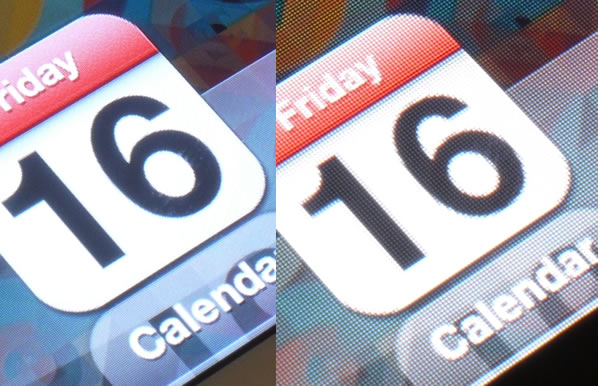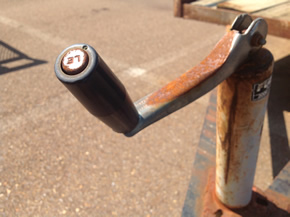Usage and Conclusion
To test the battery on the new iPad, I set the screen brightness to 70%, disabled auto-brightness and auto-lock, and loaded a 720p rip of Inception for continuous playback until the battery expired. The iPad was good for 9 hours and 38 minutes of usage.
The disclaimer from our iPad 2 review still applies: your mileage will vary depending on how heavily you use the tablet. If you are doing some heavy-duty photo editing in iPhoto, listening to Pandora in the background and have your Twitter and IM apps all open, you can expect this number to decrease significantly.

The reworked 5MP camera on the back of the iPad is a significant upgrade. Granted, you still aren't likely to carry a tablet as your primary photo snapper but it's nice to have the option if you're in a pinch. The quality is good enough to rival all but the most recent smartphones in our testing. It'll likely do just as well as a budget digital camera, although there isn't a flash. In my experience, camera phone flashes usually make things worse anyway. The front-facing camera is unchanged from the previous model.
1080p content from the iTunes store looks great on the new iPad. Even lesser quality formats like the 720p rip of Inception that was used for our battery test look really nice, albeit with both you will get black bars across the top and bottom of the screen. This is due to the 4:3 aspect ratio on the iPad, a generally uncommon format given the proliferation of widescreen devices available today.






There's been a lot of talk regarding how much heat the new iPad generates during use. This is actually one of the first things I noticed when restoring a backup of my iPad 2 from iCloud and updating a large number of apps. Some users claim their iPads have been overheating and entering a mandatory cool-down mode. However, most were playing with their new toy under direct sunlight when this happened. Apple told The Loop earlier this week that the new iPad operates well within their thermal specs.
Meanwhile, Consumer Reports claims the new iPad can't charge under heavy usage. Their testing showed that while playing Infinity Blade 2 for 45 minutes straight (when plugged into the charging cable), the iPad was unable to charge and in fact, the battery drained ever so slightly. I can verify this.
I plugged the charger into the iPad at 68% battery life then fired up Infinity Blade 2 for roughly 20-25 minutes of gaming. Upon exiting to the home screen, I found the battery capacity dropped to 67%. It's not significant, but it's concerning that the iPad is using more power than the charger can supply.
In terms of audio quality, I can't discern a difference between the new iPad and the iPad 2. The single mono speaker on the back of the iPad appears unchanged. I'd like to see a stereo speaker implemented in a future revision, perhaps even on the front. It'll likely never happen but we can dream, right?
With the original iPad, many questioned whether there was a place in the market for such a device. Netbooks were surging, notebooks were getting faster and thinner, and smartphones finally reached a point where they were effective mobile Internet tools. With the iPad 2 and countless other clones, it started becoming clear that consumers were indeed attracted to the new tablet format. With the iPad 3 and current generation slates, there's no doubt that tablets are here to stay for the foreseeable future.

Critics hoping for a totally revamped device were likely disappointed with the new iPad and it seems the fanfare isn't as intense as previous releases, but the numbers don't lie. Apple sold three million units on the new iPad's opening weekend, making it the most successful tablet launch in history.
New features like quad-core graphics, 4G LTE support and the iSight camera are all nice additions, and yet the new iPad could be summarized in only two words: Retina display. It's the key feature and with good reason – you simply have to see it to truly appreciate it. Apple has once again set the benchmark others will be striving for in 2012.
Critics will point to the lack of connectivity and expansion ports (USB, SD memory card, native HDMI, etc.) and there's really no getting around it: the iPad has none of these. Apple's iCloud is about as close as you can get to storage expansion. Flash support was once an ace in the hole for Android tablets though it's quickly becoming irrelevant.
Pricing, however, remains a strong point for Apple. The new iPad starts at the same $499 for a 16GB Wi-Fi only model – the same price as last year's model and the one before it.
But, should you buy a new iPad? As always, there's really no clear-cut answer here and it all depends on what you have (or don't have) now. If you own the original iPad or similar first generation tablet, there is enough 'new' in the latest iPad to warrant an upgrade in our opinion. Unless you classify yourself as someone that needs the latest and greatest, iPad 2 (and similar) owners can likely sit tight and wait for the next generation of slates before upgrading. If you're just entering the tablet market, Apple's new iPad is, in our opinion, the best choice available today.
That's not to say that there aren't some great Android tablets available right now. Asus's Transformer Prime would be our next choice, but it's a tough sell given the new iPad's Retina display and the sheer size of Apple's app ecosystem.
Pros: Retina display resolution is unmatched. Great performance. Solid operating system and software ecosystem. 4G support. Same price.
Cons: The iPad remains a closed device on many levels and that's something you must live with once you enter Apple's world.
